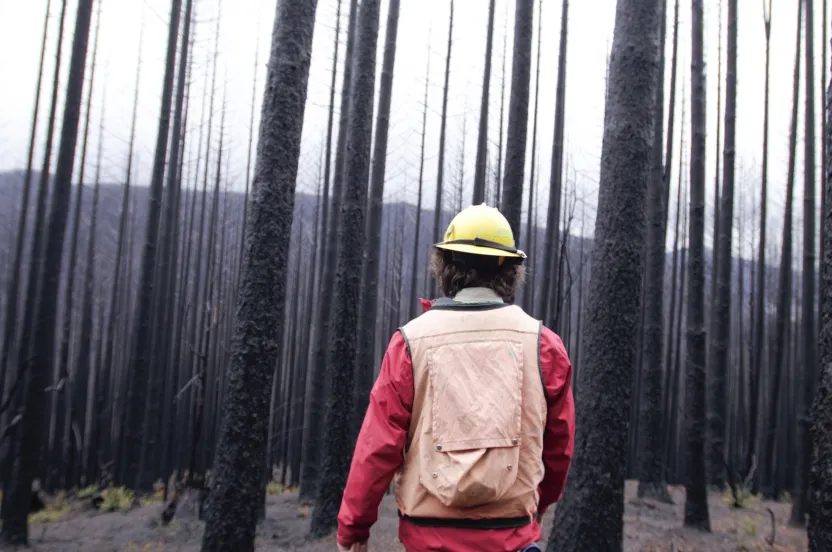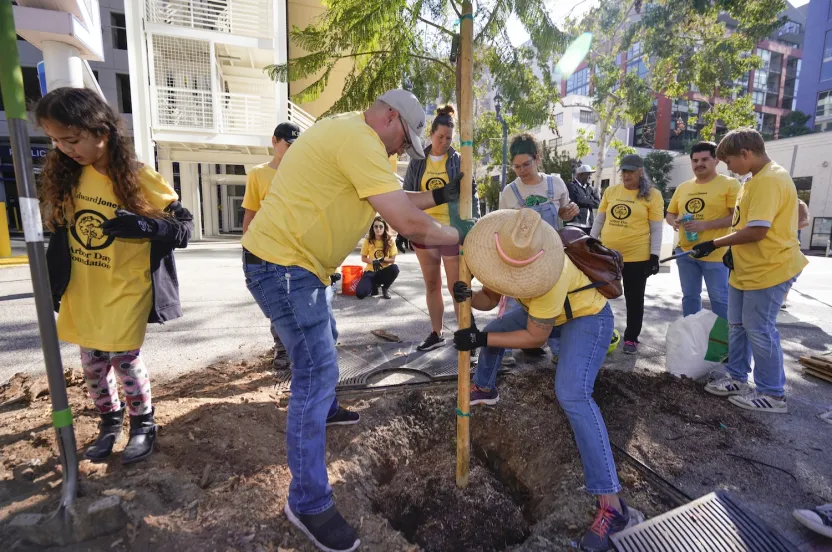Give before midnight on July 31 to double your impact where trees need us most. CHOOSE A PROJECT
Rooted in Resilience: Recovering from a Derecho
Explore how communities are rebuilding and restoring forests after the devastating derecho storm.
August 9, 2022

When it comes to the natural beauty of a community, the citizens of Cedar Rapids, Iowa, are a prideful bunch. “I love my neighborhood. It had beautiful trees, lots of shade,” said Alice, a Cedar Rapids resident. “The trees lined our street, so when you drove down, it felt cozy and protected.”
For those who have lived in Iowa’s longest-designated Tree City USA, many reflect on that same sense of safety and comfort when walking among their community’s tree canopy. “It was home. It was what we knew,” recalls Cole, another devoted Cedar Rapids resident. “I guess I didn't realize how lucky we were and how beautiful it was until it was devastated.”
August 10, 2020
On a late summer afternoon, without any warning or preparation, Cedar Rapids suffered one of the most damaging weather events in Iowa’s history. A straight-line windstorm — typically referred to as a “derecho” — swept through the city with wind gusts reaching over 140 mph.
With gales exceeding forces typically experienced during hurricanes, this landlocked state suffered unprecedented destruction. Flattened crops. Rolled-over trucks. Power outages. Widespread property damage. And many uprooted and fallen trees. Urban forestry reports tallied more than 669,000 trees that were damaged and destroyed, accounting for nearly 70% of the community’s previously existing canopy. Since recovery began, more than 4.2 million cubic yards of tree debris have been collected and removed. According to the National Oceanic and Atmospheric Administration, the storm caused $7.5 billion in damage between South Dakota and Ohio, making this derecho the costliest thunderstorm in U.S. history.
Cedar Rapids is one of the most populated cities in Iowa. Many residents have lived, worked, and raised their families there for generations. And within the span of less than 60 minutes, an entire landscape that was once so familiar and cherished by so many people had become nearly unrecognizable.
A vision of hope
After more than a year of cleanup efforts, community healing, and preparation, the City was ready to begin its beloved tree canopy’s road to recovery. Through months of planning among city officials, environmental experts, and community members, the City adopted the ReLeaf Cedar Rapids plan in February 2021. This 10-year, $37 million plan will serve as a guide for the City, institutions, nonprofits, and private property owners to follow when replanting urban trees. Through consistent communication and feedback from the public, the ReLeaf Cedar Rapids plan will provide hands-on opportunities and programs to address a variety of key issues including local habitat preservation, climate action, native biodiversity, and environmental equity.
Supporting neighborhoods
Out of the hundreds of thousands of total trees that were destroyed by the derecho, nearly 85% of them were located on private properties. This list includes corporate and institutional campuses, cemeteries, golf courses, and — most importantly — residential yards. The thousands of individual yards that surround urban homes offer the biggest opportunity for community canopy growth. Additionally, yard trees provide several benefits to homeowners, such as increasing property value, lowering utility cost through extra shade, preventing soil erosion, and improving the overall beauty and aesthetic of the home’s exterior.
Also Read: Regreening Wilmington
The process of obtaining and installing new trees around the house can come with many hurdles for a recovering community. Selecting a proper tree species, cost, transportation, convenience, and other factors can place additional burden on residents who are already dealing with the process of rebuilding. With the support of local organizations and partners, the Arbor Day Foundation is working to help organize tree distribution events that give away saplings and young trees to residents who are looking to add a tree to their yard at no cost. These distribution events also offer the community a unique chance to engage with local conservation groups and learn more about how to properly care for their own trees and the surrounding neighborhood canopy.
Planting a future
Following a storm of this magnitude, a single day of distributing trees is not enough. By working with local planting partner and ReLeaf Cedar Rapids’s directing organization Trees Forever, the Arbor Day Foundation organized multiple planting and distribution events in the fall of 2021 and spring of 2022. As part of the Foundation’s Community Tree Recovery program, these events have given out 767 trees to local residents and have planted an additional 100 trees along city streets with the help of community volunteers.
These trees will provide neighborhoods with a variety of environmental and recovery-related benefits, including improved air and water quality, pollinator habitat restoration, and stormwater interception to help mitigate flooding. Through a united effort with Trees Forever and a vast network of partners, the Arbor Day Foundation will continue to contribute trees to ReLeaf Cedar Rapids one project at a time.
These efforts would not have been possible without the compassion and support from dedicated Foundation partners including CHEP, Hy-Vee, International Paper, State Farm, Texas Roadhouse, and WestRock.






